Aperture's Blog, page 185
February 12, 2014
The Aperture Summer Open is now accepting entries!
Entries for the 2014 Aperture Summer Open will be accepted from Friday, February 14, 2014 until Wednesday, April 9, 2014 at 12:00 p.m. EST. Membership with Aperture Foundation is the sole requirement for entry into the Summer Open.
To purchase your membership, please visit aperture.org/join. Upon purchase, you will receive a unique entry code that will allow you to enter the 2014 Aperture Summer Open.
The post The Aperture Summer Open is now accepting entries! appeared first on Aperture Foundation NY.
February 5, 2014
Entries for the 2014 Aperture Summer Open will be accepte...
Entries for the 2014 Aperture Summer Open will be accepted from Monday, February 10, 2014 until Wednesday, April 9, 2014 at 12:00 p.m. EST.
Membership with Aperture Foundation is the sole requirement for entry into the Summer Open.
To purchase your membership, please visit aperture.org/join. Upon purchase, you will receive a unique entry code that will allow you to enter the Summer Open.
Enter here!
The post appeared first on Aperture Foundation NY.
January 31, 2014
Week in Review: 01.31.2014

Marco Breuer, Untitled (C-1189), 2012. © Marco Breuer, courtesy Yossi Milo Gallery, New York.
Aperture aggregates the photography blogosphere’s most trending stories from the past week.
››This week, the world responded in shock to a cache of 55,000 photographs detailing Syria’s “torture” regime. The photographs, allegedly smuggled out of the country by a defector, document the deaths of some 11,000 detainees. Even more horrific is the fact that they were taken not by the opposition, but by the perpetrators themselves: members of Syrian president Bashar al-Assad’s regime. In an op-ed for the New York Times, Aperture contributor Susie Linfield notes that in this case, “Rather than expose atrocities, photographs now advertise them,” and compares the photos to similarly revolting “perpetrator images” from Nazi Germany. She notes that today, with the use of social media, “these images of cruelty ricochet around the globe.”
››It seems that photography’s identity is being examined on multiple platforms, and we’re floored that New York City is buzzing with talk of the ICP’s latest exhibition, What is A Photograph? The show, which includes work by Marco Breuer, examines our challenge in defining serious photography in a world saturated with images. The show has already generated conversation, and comes at a time when other major institutions, including MoMA, Pier 24, and Aperture magazine, are addressing photography’s “identity crisis” in the midst of technological advances and an “overflow of images.” But is it a crisis? “It’s a benefit,” Pier 24 director Christopher McCall said to the New York Times, encouraging curators “to analyze and think about images because they’re everywhere.”
››State of the Union aside, President Obama caught the art world’s attention with a speech in Wisconsin, where he stressed the importance of education, specifically of the trade-school variety. A valid point, except that he knocked art-history majors in the process, and some have taken offense. “Oh my God, no,” the CEO and executive director of the College Art Association told Politico, “That’s just awful.” In his defense, Obama “loves art history.” And his wife, First Lady Michelle? She totally gets it. “The arts are not just a nice thing to have or to do if there is free time or if one can afford it. Rather, paintings and poetry, music and fashion, design and dialogue, they all define who we are as a people and provide an account of our history for the next generation.”
››It would be difficult to sum up this week without mentioning the fast-approaching 2014 Winter Olympic Games in Sochi, the details of which seem to grow more outlandish by the minute. Fascinating, disturbing, and downright absurd, drama surrounding the games seems more fit for a circus tent than a stadium. Aperture’s The �Sochi Project, by Rob Hornstra and Arnold van Bruggen, has gained attention as a look beyond the facade of the games, though photographer Hornstra and van Bruggen won’t make it back to Russia any time soon. This week, as the international community pleads with Russia to repeal its anti-gay laws, we learned that winning athletes will be awarded pieces of meteor, and that Putin’s promise of a “green” Olympics was a guise.
››Escaping frigid weather on the East Coast, art publishers and fans alike headed west to the LA Art Book Fair. The fair, which opened at the Museum of Contemporary Art’s Geffen Contemporary on January 30 and runs until February 2, is in its second year. It features 250 international presses, booksellers, antiquarians, artists, and independent publishers (Aperture included). Its success last year was reassuring proof that print is most certainly not dead—although we knew that already. Earning attention and praise was a Queer Zines Exhibition, which highlighted the zine’s role in facilitating connection and communication between members of the gay community over the past 30 years.
—
Follow Aperture on Twitter (@aperturefnd) for a daily feed of photography-related news and commentary, and follow #InsideSochi to stay updated on the latest from the Games.
Katie Booth is an Aperture Work Scholar and a photographer. Originally from the Adirondacks, she holds a BFA in photography from SUNY Plattsburgh.
The post Week in Review: 01.31.2014 appeared first on Aperture Foundation NY.
Best of Aperture: PhotoBooks in 2013
With the New Year came the quintessential batch of “Best Books of 2013″ lists, and we were delighted to find our name on a few. From the nuanced, lushly colored pages of Rinko Kawauchi’s Ametsuchi , to the previously unseen visions of the red planet offered in This Is Mars , here’s where sixteen of our best titles were celebrated at year’s end.
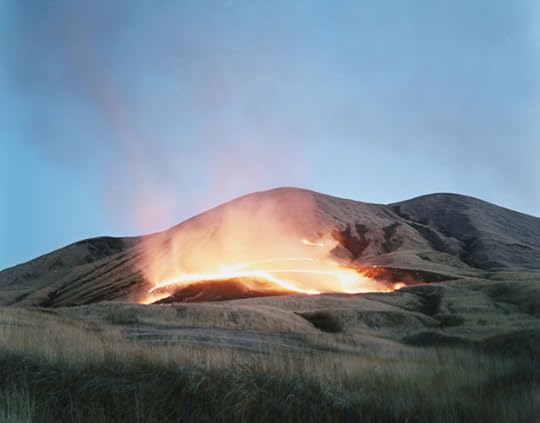
From Ametsuchi © Rinko Kawauchi
Ametsuchi: Photographs by Rinko Kawauchi
“The Best Books of 2013”, The Washington Post; “Alec Soth: My Top 10 Photo Books of 2013”, The Telegraph; “The Best Photobooks of 2013 According to Everyone”, Feature Shoot
···
Color Rush: American Color Photography from Stieglitz to Sherman
“2013 Photo Books of the Year: Reflection”, American Photo
···
James Welling: Monograph
Surface Magazine holiday gift guide (Dec/Jan Issue – in print)
···
Life’s a Beach: Photographs by Martin Parr
“Gifts for Gobetrotters”, Condé Nast Traveller; “Mother Jones’ Photographers Pick the Best Photobooks of 2013”, Mother Jones; “These Coffee Table Books Make Beautiful–and Unusual–Christmas Gifts: Forget the Night Before Christmas”, New York Observer
···
Bending the Frame: Photojournalism, Documentary, and the Citizen by Fred Ritchin
“The 30 Best Art Books of 2013”, Huffington Post; “2013 Photo Books of the Year: Reflection”, American Photo
···
City Stages: Photographs by Matthew Pillsbury
“Photography Books”, The Wall Street Journal
···
The Enclave: Photographs by Richard Mosse
“2013 Photo Books of the Year: Documentary”, American Photo
···
Emmet Gowin: Photographs by Emmet Gowin
“Photography books of the year”, The Guardian; “Alec Soth: My Top 10 Photo Books of 2013”, The Telegraph; “TIME Picks the Best Photobooks of 2013”, TIME LightBox; “Eight Amazing Photo Books from 2013 You May Have Missed”, Slate; “gwarlingo’s 26 favorite art, photography, film & design books of 2013”, Gwarlingo; “2013 Photo Books of the Year: Fine Art”, American Photo
···
Sergio Larrain: Photographs by Sergio Larrain
“Sunday Book Review Holiday Books”, The New York Times and In Print
···
This is Mars: Photographs by NASA/MRO, Edited and designed by Xavier Barral
“Eight Amazing Photo Books from 2013 You May Have Missed”, Slate; “Black and White Photography Books of the Year”, The Telegraph; “2013 Gift Guide: Science Books”, The Wall Street Journal; “The Gift Finder 2013; Judge the Book by Its Cover” New York Magazine (December 2, 2013 – In Print); “The Best Photography Books of 2013”, Brain Pickings; “Holiday Gift Guide 2013”, Afar Magazine (November 2013 – In Print); “2013 Photo Books of the Year: Environment”, American Photo
···
Non-Conformists: Photographs by Martin Parr
“Sunday Book Review Holiday Books”, The New York Times, and In Print; “The Top 10 Photo Books of 2013”, The New York Times Magazine; “Notable Photo Books of 2013”, Photo District News, In Print
···
Sketch of Paris: Photographs by JH Engström
“The Top 10 Photo Books of 2013”, The New York Times Magazine
···
Sochi Project: An Atlas of War and Tourism in the Caucasus , Photographs by Rob Hornstra
“Mother Jones’ Photographers Pick the Best Photobooks of 2013”, Mother Jones; British Journal of Photography (“20 Best Things to Happen in Photography This Year” December Issue 2013 – in print)
···
Storms: Photographs by Mitch Dobrowner
“Books of the Year: Mitch Dobrowner, Eye of the Storms”, American Photo; “The Best Art Books to Give as Gifts”, Reader’s Digest
···
Understanding a Photograph , by John Berger, Edited by Geoff Dyer
“2013 Photo Books of the Year: Reflection”, American Photo; “Good Reads Under the Tree; Fall Titles Begging to be Unwrapped”, Art + Auction (December 2013, In Print); “5 New Books that Will Inspire You in 2014″, Shutterstock
···
Wall: Photographs by Josef Koudelka
“Sunday Book Review Holiday Books”, The New York Times, online and in print; “TIME Picks the Best Photobooks of 2013”, TIME LightBox; “Notable Photo Books of 2013”, Photo District News, In Print
—
Follow Aperture on Twitter (@aperturefnd) for a daily feed of photography-related news and commentary.
The post Best of Aperture: PhotoBooks in 2013 appeared first on Aperture Foundation NY.
January 27, 2014
Publisher’s Note
Dear PhotoBook Review Readers,
In art, as in life, there is a critical difference between a brilliant idea and the translation of that idea into concrete action or physical form. For the photographer, this process begins with the capture of an idea, of a keenly observed moment in space and time, onto a two-dimensional plane. That single image may turn into a body of work, a series—or simply an accumulation of images that wants to be set loose into the world. This is where the book form excels. As Horacio Fernández puts it in his introduction to The Latin American Photobook (Aperture, 2011), “Photobooks move around even more than photographers do. Sometimes they travel slowly, but they find their way out there in the end.”
I was reminded of the tremendous connective potential of the book when jurying the short list for this year’s Paris Photo–Aperture Foundation PhotoBook Awards. How else would one come in contact with a body of work being made by a collective of artists from Helsinki with a scant international-exhibition track record (Maanantai Collective, [Kehrer Verlag, 2013])? How else would I find myself mesmerized by the work of a Spanish artist previously unheard of (by me, in any case), save for his having found the perfect collaborator in a small but determined French publisher (Óscar Monzón, KARMA [RVB Books/Dalpine, 2013])? Yes, the Internet is great for finding a portfolio of images, but to see the work realized, sequenced, and presented on the printed page, with a par- ticular texture of paper, hyper-gloss varnish, or other physical aspect that subtly underscores the artist’s intent, is an entirely different, visceral experience. And it is when that book form effectively elevates a body of work that would not otherwise be immediately accessible, or that amplifies certain underpinnings of the artist’s concept, that one can recognize a really interesting Book Work. Finding that physical form can be an important first step to propelling an artist beyond his or her own studio, friends, and gallery walls. It is both a delicate art of transubstantiation and a factory operation of pure mechanical calculation.
A special thanks to Darius Himes, our guest editor, who suggested that this issue of The PhotoBook Review take some time to meditate on the fine art of making things. Both thanks and kudos to The PhotoBook Review’s now-former associate editor, Brian Sholis; he will have joined the Cincinnati Art Museum as associate curator of photography by the time this issue is released. Congratulations also to design director Emily Lessard, who helped launch The PhotoBook Review in 2011, and who is now leaving Aperture to work as the design director for New York City & Company. As always, the act of publication is one of community and of shared interests. Over to you, the reader, to do your part!
—Lesley A. Martin
Publisher, The PhotoBook Review and Aperture Foundation book program
The post Publisher’s Note appeared first on Aperture Foundation NY.
Recap: Prix Pictet: Power Closing Reception
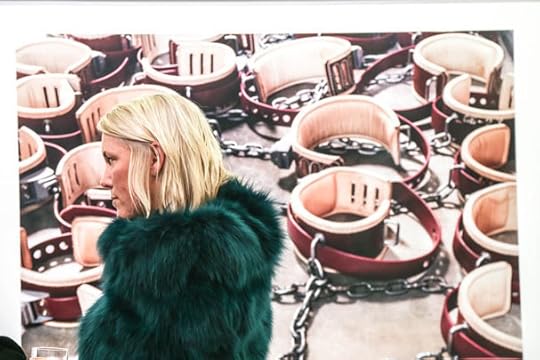

Prix Pictet: Power closing reception at Aperture Gallery, January 22, 2014, Image © Katie Booth.

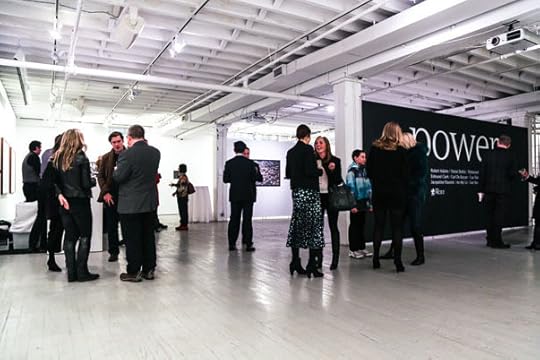
Prix Pictet: Power closing reception at Aperture Gallery, January 22, 2014, Image © Katie Booth.

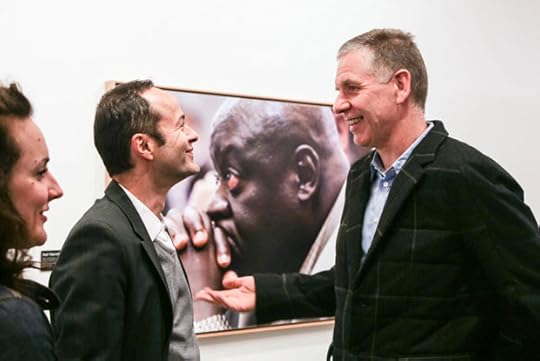
Chief Curator of Photography at the Museum of Modern Art, Quentin Bajac with Aperture Foundation Executive Director Chris Boot, Image © Katie Booth.

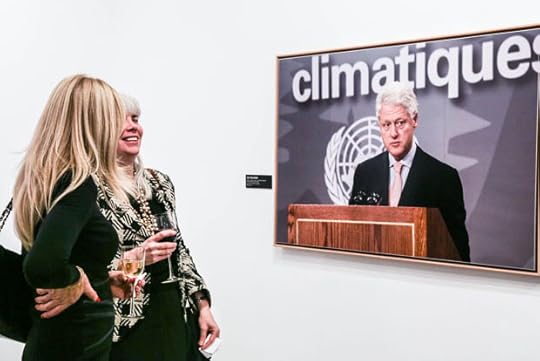
Prix Pictet: Power closing reception at Aperture Gallery, January 22, 2014, Image © Katie Booth.

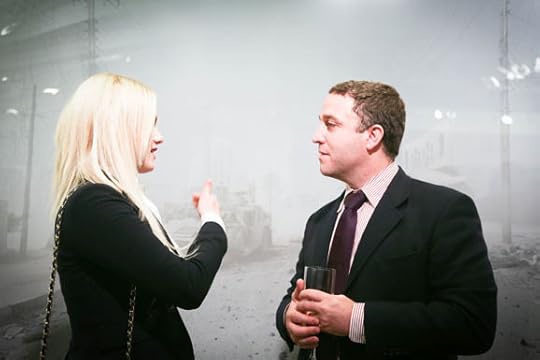
Prix Pictet: Power closing reception at Aperture Gallery, January 22, 2014, Image © Katie Booth.

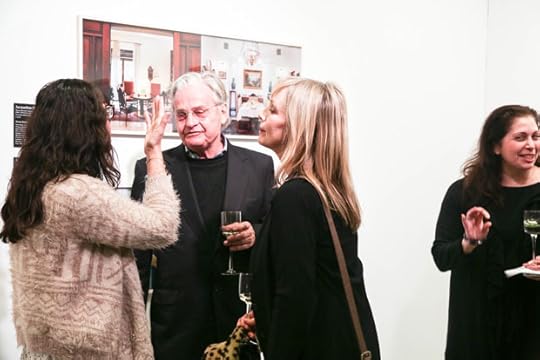
Prix Pictet: Power closing reception at Aperture Gallery, January 22, 2014, Image © Katie Booth.

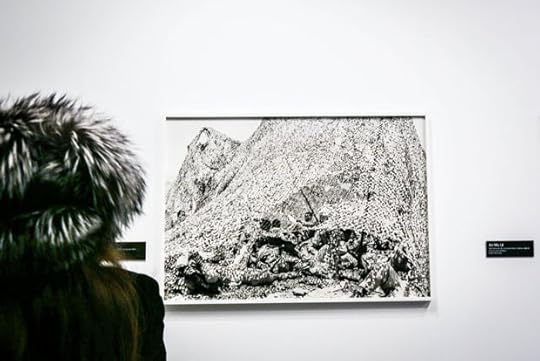
Prix Pictet: Power closing reception at Aperture Gallery, January 22, 2014, Image © Katie Booth.

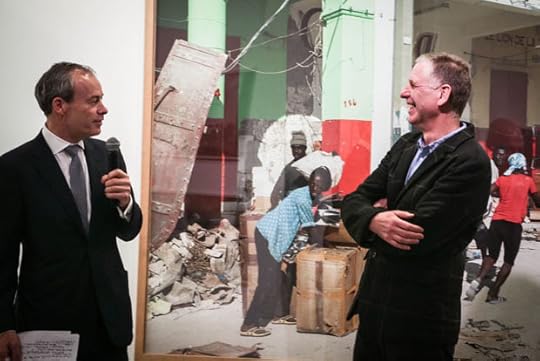
Prix Pictet Chairman Stephen Barber with Aperture Foundation Executive Director Chris Boot, Image © Katie Booth.

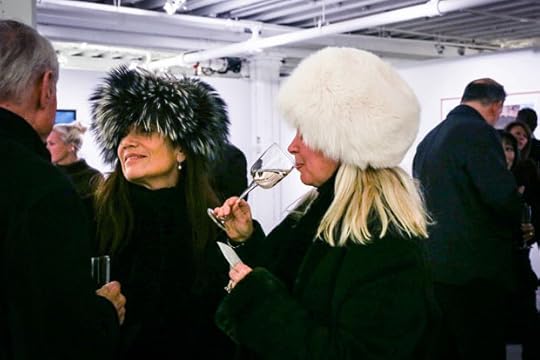
Prix Pictet: Power closing reception at Aperture Gallery, January 22, 2014, Image © Katie Booth.

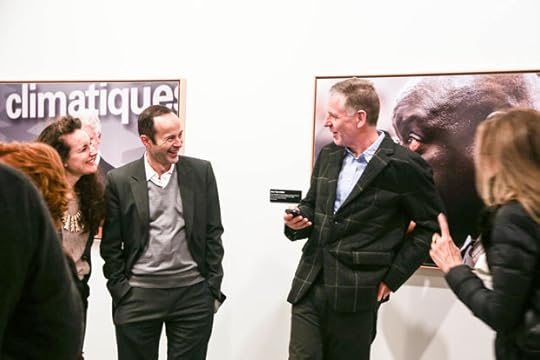
Chief Curator of Photography at the Museum of Modern Art, Quentin Bajac with Aperture Foundation Executive Director Chris Boot, Image © Katie Booth.

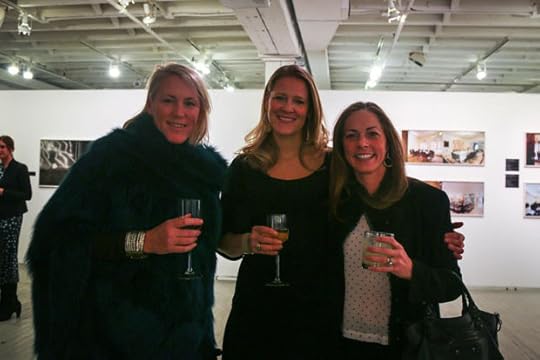
Prix Pictet: Power closing reception at Aperture Gallery, January 22, 2014, Image © Katie Booth.


Prix Pictet: Power closing reception at Aperture Gallery, January 22, 2014, Image © Katie Booth.
On Wednesday, January 22, over 100 invited guests gathered at Aperture Gallery for the finissage of Prix Pictet: Power. Prix Pictet Chairman Stephen Barber, Director Michael Benson, and Aperture Members and Trustees plus other special guests, were all in attendance.
Founded by Pictet, the Geneva-based wealth and asset management group in 2008, the Prix Pictet has rapidly established itself as the world’s leading prize in photography and sustainability. The award aims to uncover outstanding photography applied to confront the most pressing social and environmental challenges of today. The Prix Pictet: Power exhibition features this year’s shortlisted photographers and the winner, Luc Delahaye, who embrace this year’s theme of Power, with both awe-inspiring and disturbing images.
Want to join the Aperture community at our next event? Become an Aperture member today!
The post Recap: Prix Pictet: Power Closing Reception appeared first on Aperture Foundation NY.
January 24, 2014
Week in Review: 01.24.2014
Aperture aggregates the photography blogosphere’s most trending stories from the past week.

Olga, © Rob Hornstra / Courtesy Flatland Gallery
››The Winter Olympics are fast approaching, and the world is beginning to take notice of more than just the games. The traveling exhibition The Sochi Project, by Rob Hornstra and Arnold van Bruggen, is making waves on Fox News and in Chicago magazine after its opening at the DePaul Art Museum, Chicago. Everything from the Games’ budget and Putin’s politics to Sochi’s place in Russia as a subtropical conflict zone are being called into question. (Here, the Guardian interviewed Hornstra and van Bruggen about the project). The BBC also noticed that Sochi has some pretty strange bathrooms.
››The Associated Press is breaking ties with Narciso Contreras, a freelance photojournalist who won a Pulitzer Prize with a team of other AP photographers last year, due to a single Photoshopped image, the New York Times reported. Contreras turned himself in, admitting that he had removed a colleague’s video camera from one of his images taken in Syria. Contreras, who has covered the conflict in Syria extensively, accepted full responsibility. Even though it’s unfortunate, it was good to see one man’s honesty and an industry that still holds photojournalists accountable.
››This week, Carrie Mae Weems: Three Decades of Photography and Video opened at the Guggenheim Museum. Reviews of the retrospective, which was originally organized by the Frist Center for the Visual Arts in Nashville, have been mixed, though certainly not because of Weems’s work. The exhibition has been cut down to half its original size and split between two floors of annex galleries. However, given the show’s restrictions, Holland Cotter of the New York Times gave its curators credit for showcasing the work, and Maurice Berger stressed their importance. We looked back at Weems’s conversation with Dawoud Bey at Aperture.
››From the impact of stock photography to the use of social media, the ways people are making and sharing images are rapidly changing. Here, the Bold Italic gives some entertaining insight into how Instagram has made us all into liars. And when Stephen Mayes, a major player in the field of photography, weighs in on the future of the medium, it’s worth taking notice. Instead of hiding under a rock, Mayes encourages photographers to take the changes wrought by social media seriously, and maybe even get inspired by them. “What does that mean for the future of photography?” he says. “Every day I’m amazed by what’s happening.”
››For those of us not hiding under a rock, it was difficult to miss the hype surrounding Jezebel’s leaked un-altered images of Vogue’s latest cover girl, Lena Dunham. From the originals, we can see photographer Annie Leibovitz’s Photoshop job, and everyone from Time to Dunham herself had an opinion on whether or not it was ethical to leak the photos—for which Jezebel paid $10,000—and whether the images themselves sent the wrong message. For photographers, it raised questions about the purpose of editorial imagery: aren’t these photos sometimes supposed to be a bit fantastical?
››Speaking of photo-sharing, this Thursday was Museum Selfie Day, a call to museum-goers across the globe to do what, apparently, they do best: take selfies with priceless works of art. Everyone from college students to Jay-Z posted images—some funny, some just plain bizarre. From the New Republic, the event generated talk of the museum experience, but overall the day just showcased some great art from around the world.
››Since Aperture’s photobook This is Mars was published in 2013, we’ve been keeping an eye on updates from our favorite red planet. This week, NASA’s Opportunity rover, in its tenth year of exploration, discovered a new rock. That sounds pretty boring, but apparently, the rock is made up of material formed in aqueous environments, fitting with a picture of a Mars that was once more hospitable to life. And according to NASA’s lead scientist for the Mars Exploration Program, Michael Meyer, “It looks like a jelly doughnut.”
—
Follow Aperture on Twitter (@aperturefnd) for a daily feed of photography-related news and commentary.
Katie Booth is an Aperture Work Scholar and a photographer. Originally from the Adirondacks, she holds a BFA in photography from SUNY Plattsburgh.
The post Week in Review: 01.24.2014 appeared first on Aperture Foundation NY.
Edmund Clark and Jacqueline Hassink in Conversation
In conjunction with the exhibition Prix Pictet: Power, which opened at Aperture Gallery on December 5, 2013, Aperture hosted a conversation between two of Prix Pictet’s short-listed photographers, Edmund Clark and Jacqueline Hassink. This was Prix Pictet’s fourth cycle, and nearly 650 photographers worldwide were nominated for the prize. Of the winning work, Kofi A. Annan, former secretary general of the United Nations and honorary president of the Prix Pictet, writes, “The work of the short-listed photographers provides a vivid portrait of human vulnerability. But they also remind us that the same forces that might engender despair can also be the source of great hope. They evoke a heartening reminder of our capacity for humanity, courage, and solidarity in the face of adversity.”
Following an introduction by Aperture deputy director Sarah McNear, Clark and Hassink discussed the evolution of their projects, their experiences photographing, and their approaches to the theme of Power. Clark’s series Guantanamo: If the Light Goes Out, which took him inside Guantanamo Bay and to the homes of former inmates, provided an interesting contrast to Hassink’s series, Arab Domains, which brought her to the residences and boardrooms of some of the most influential women in the Middle East. They ended the evening by inviting the audience to participate in a brief Q&A session.
View “Edmund Clark and Jacqueline Hassink in Conversation” Part 2 and Part 3 on Vimeo.
The post Edmund Clark and Jacqueline Hassink in Conversation appeared first on Aperture Foundation NY.
January 22, 2014
Recap: Show and Tell with Aperture Editors


Chris Boot speaks to Members at “Show and Tell with Aperture Editors." Photo by Frances Dorenbaum


Members at “Show and Tell with Aperture Editors." Photo by Frances Dorenbaum


Q & A session with Denise Wolff, Chris Boot and Lesley Martin at “Show and Tell with Aperture Editors." Photo by Frances Dorenbaum


Q & A session with Denise Wolff, Chris Boot and Lesley Martin at “Show and Tell with Aperture Editors." Photo by Frances Dorenbaum


Q & A session at “Show and Tell with Aperture Editors." Photo by Frances Dorenbaum


Members at “Show and Tell with Aperture Editors." Photo by Frances Dorenbaum


Members at “Show and Tell with Aperture Editors." Photo by Frances Dorenbaum


Senior editor Denise Wolff at “Show and Tell with Aperture Editors." Photo by Frances Dorenbaum
On Saturday, January 18, Aperture Foundation presented the Members-only program Show and Tell with Aperture Editors. Aperture executive director Chris Boot, books publisher Lesley A. Martin, and senior editor Denise Wolff presented some of their favorite book projects, for a behind-the-scenes look at how photobooks are made and at the creative decisions that inform this process.
Over sixty Members were in attendance for the lively discussion and exclusive Q&A session. Stay tuned for more exciting Aperture Member events throughout 2014!
For more information on Aperture’s Member program, please visit aperture.org/shop/donate.
The post Recap: Show and Tell with Aperture Editors appeared first on Aperture Foundation NY.
January 17, 2014
Week in Review: 01.17.2014
Aperture aggregates the photography blogosphere’s most trending posts from the week.

Image from the book This is Mars (Aperture, 2013), with photographs by NASA/MRO. Edited and designed by Xavier Barral, with texts by Alfred S. McEwen, Francis Rocard, and Nicolas Mangold.
›› With the New Year comes the quintessential batch of “Best of 2013″ lists. From photobooks to photojournalism, we were delighted to find our name on a few. The New Yorker‘s Photo Booth blog published a post titled “The Year in Photojournalism,” which included the above image from This is Mars. The book also made Brainpickings‘ Best Photography Books of 2013 list, and Ametsuchi made Terra Galleria‘s meta-list.
›› And 2014 has brought with it some big announcements. This week, MoMa announced its plan to demolish the Folk Art Museum building as part of its expansion plan for 2014, releasing photos of a redesign that has many puzzled. Clearly, the museum needs more space, but at what cost? The decision was met with strong opinions. Architect Elizabeth Diller defended the decision, and the New York Daily News, NYT, and Vulture weighed in.
›› After a long battle to keep Cooper Union free, its Board of Trustees announced that the school will be charging tuition for its fall 2014 applicants. The institution, once extraordinary in its unique meritocracy, will now be decidedly ordinary, joining the ranks of art colleges in NYC and elsewhere. The decision came when a cost-saving proposal created by the Cooper Union community was voted down on January 10. Reuters labeled the decision “depressing, yet entirely predictable,” and ArtFCity sympathized with incoming freshmen.
›› On the plus side, some things will still be free for artists in 2014. The New York Times announced it will continue its second annual free portfolio review. It’s free for photographers to submit images, and 150 will be chosen to attend the review this April. One of Aperture’s editors, Denise Wolff, is on the lineup of reviewers. Also promising was Flickr’s decision to include copyright metadata in its image files, perhaps in response to stories like this one. Now we can all feel a little better about sharing.
›› Larry Clark, whose work includes the 1971 photobook Tulsa and the iconic 1995 film Kids, made waves on the web this week, when he announced that he would be selling snapshots—which can sell for tens of thousands of dollars—for a mere 100 bucks a pop at an East Village art space. Of the decision, Clark said, “This is a payback to all the skate rats and collectors who would like a souvenir, so I can die happy.”
›› There are a handful of openings to look forward to as January comes to a close. FlakPhoto put together an exhibition titled Making Pictures of People with photographers from the online photo and art community, and Aperture’s own Richard Renaldi is on the list with his series Touching Strangers. The show opens January 31 at the Nelson-Atkins Museum of Art, Kansas City, Missouri. Opening the same day in New York, the International Center of Photography announced its upcoming exhibition of unpublished color photographs by Robert Capa, Capa in Color.
›› What to expect in 2014? Well, no one seems sure what to call it, but there’s plenty of talk about photography’s shift toward digitized, interdisciplinary media. Whatever you label it, it’s clear that lines are being blurred in innovative ways. Even Sundance has implemented a new program that includes photography, and here, the Collector Daily attempts to sum it up for us.
—
Follow Aperture on Twitter (@aperturefnd) for a daily feed of photography-related news and commentary.
Katie Booth is an Aperture Work Scholar and a photographer. Originally from the Adirondacks, she holds a BFA in Photography and Graphic Design from SUNY Plattsburgh.
The post Week in Review: 01.17.2014 appeared first on Aperture Foundation NY.
Aperture's Blog
- Aperture's profile
- 21 followers




